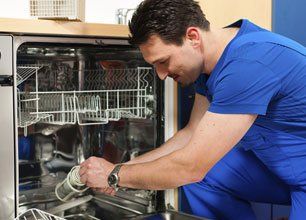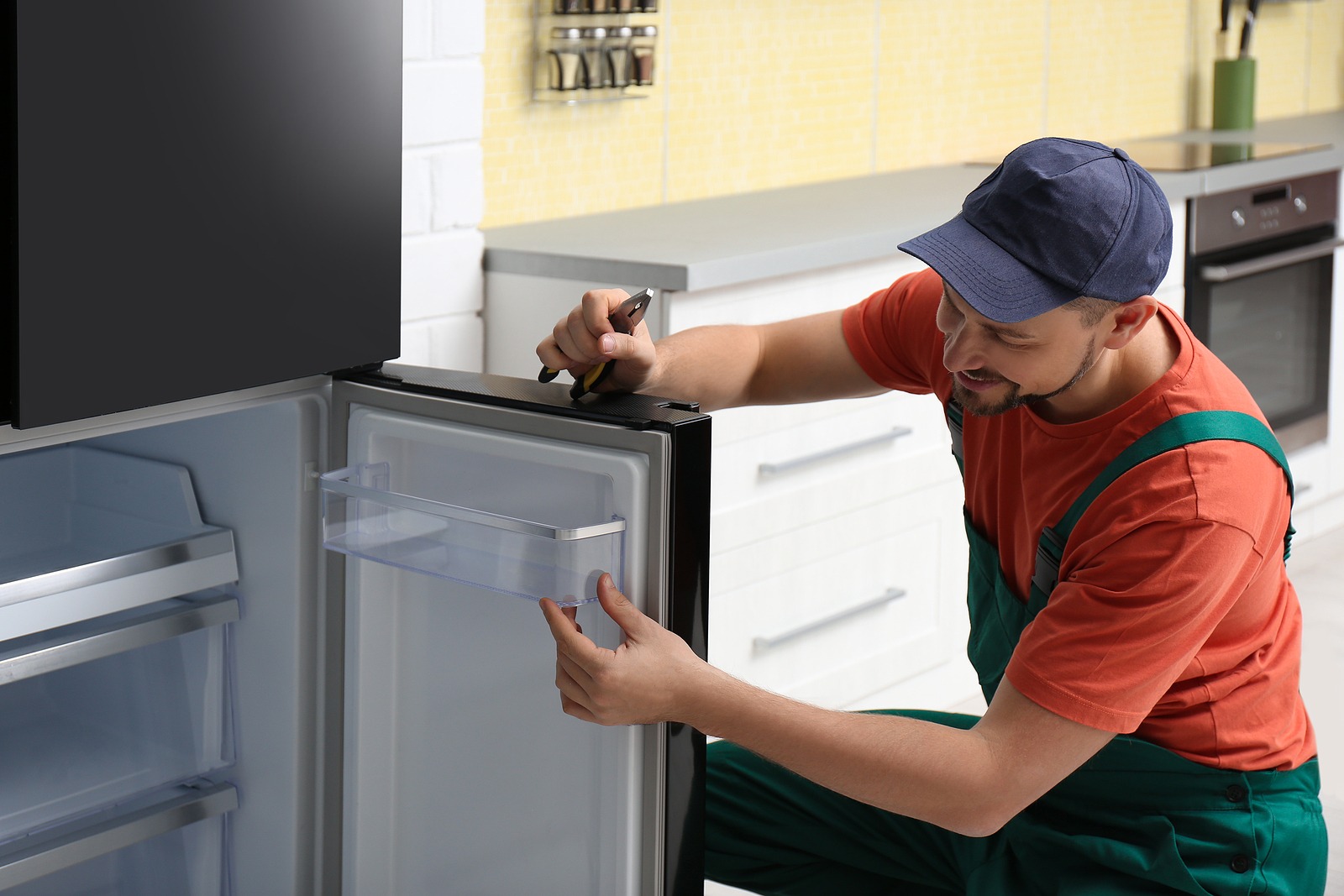Rental Property Owners Trust Dependable Refrigeration & Appliance Repair Service Sub-Zero Appliance Repair
Rental Property Owners Trust Dependable Refrigeration & Appliance Repair Service Sub-Zero Appliance Repair
Blog Article
The Ultimate Guide to DIY Device Repair Work Techniques
When devices break down, it's simple to feel overwhelmed. Emergency Sub-Zero Repair Dependable Refrigeration & Appliance Repair Service. With the best expertise and devices, you can tackle typical concerns on your own. From fridges to dishwashers, comprehending just how to repair and repair these devices can save you time and cash. Are you all set to uncover important methods that will equip you to take care of repair work with confidence? Allow's discover the vital locations where do it yourself skills can make a considerable difference.
Comprehending Typical Home Appliance Issues
When you count on your home devices, it can be frustrating when they unexpectedly quit functioning or break down. Recognizing usual appliance troubles can help you troubleshoot problems efficiently. As an example, if your refrigerator isn't cooling, check the temperature settings or examine the door seal for spaces. A defective cleaning maker may be as a result of a clogged up drainpipe filter or a busted belt.
If your stove isn't home heating, defective elements or thermostat concerns might be to blame. Dish washers usually experience issues with drainage, so make certain the filter is tidy and the drain hose isn't kinked.
Additionally, listen for uncommon sounds; they usually show mechanical issues. By identifying these indications, you can conserve time and potentially prevent costly fixings. A little understanding goes a lengthy way in keeping your appliances, so remain informed to keep everything running efficiently.
Important Devices for Do It Yourself Repair Works
Prior to diving into do it yourself home appliance repairs, it is very important to gather the right tools to assure the procedure goes efficiently. Start with a great collection of screwdrivers, consisting of both flathead and Phillips, as they're vital for opening up most home appliances. You'll additionally want a set of pliers for clutching and turning wires or small elements.
Do not neglect a multimeter; it helps you test electrical elements and detect concerns effectively. A socket set is convenient for loosening up or tightening up screws, while an utility knife can be helpful for reducing wires or opening up packaging.
Lastly, take into consideration having a flashlight accessible to light up dark areas inside your appliances. With these important tools, you'll be well-appointed to take on numerous fixings, conserving both money and time. So, collect your equipment and prepare yourself to roll up your sleeves!
Security First: Safety Measures to Take
Prior to you begin any type of home appliance repair service, it's necessary to focus on safety and security. Make sure you use personal protective equipment, separate the source of power, and keep your work area organized. These basic safety measures can aid prevent mishaps and assure a smoother repair service procedure.

Individual Safety Devices
Security equipment is an important part of any type of DIY home appliance repair task. You need to always wear security goggles to secure your eyes from dust and debris. A durable set of gloves will shield your hands from harmful products and sharp sides. Take into consideration making use of a mask if you're dealing with chemicals or dirt, guaranteeing you take a breath securely while functioning. Steel-toed boots are likewise a wise choice, especially when raising hefty home appliances. Don't fail to remember to wear long sleeves and trousers to secure your skin from prospective injuries. By prioritizing individual safety devices, you'll substantially minimize the threat of injuries and crashes. Bear in mind, being prepared with the right equipment maintains you secure and concentrated on completing your repair successfully.
Power Source Interference
To ensure a safe DIY device repair work, disconnecting the source of power is necessary. Before you begin any job, you should turn or disconnect the appliance off the breaker. This simple action stops electric shocks and warranties that you can concentrate on the repair service without bothering with accidental activation. Always ascertain that the home appliance is off by examining it with a voltage tester. If you're handling bigger devices, like a washer or dryer, see to it to safeguard the power cord and prevent any kind of call with water. Bear in mind, security! As soon as you're confident that the power is detached, you can with confidence wage your repairs, understanding you've taken the necessary safety measures to secure on your own.
Workplace Organization
A well-organized job area can make all the distinction in your DIY home appliance repair job. Beginning by clearing your workspace of clutter to protect against mishaps and distractions. A tidy space not just increases performance but likewise maintains you safe while you function on your device repair.
Step-by-Step Overview for Fridge Repair Works
When your fridge begins acting up, it can be discouraging, yet taking on the trouble on your own can conserve you time and cash. First, unplug the refrigerator to assure safety and security. Examine for usual issues like temperature fluctuations or unusual noises. If it's not cooling down, check the thermostat setups; they may be set also high. Next off, tidy the condenser coils, which often gather dust and debris. For a noisy fridge, inspect the fan and confirm it's not obstructed.
If there's water merging inside, examine the door seals for damages or dust, and clean them if essential. As soon as you have actually addressed the concern, plug the refrigerator back in and monitor it for a few hours.
Dealing With Washing Maker Issues
Just like refrigerators, washing makers can provide their very own collection of obstacles, yet many issues can be resolved with a bit of troubleshooting. If your machine will not begin, examine the power cable and validate it's connected in.
If your garments aren't getting tidy, take into consideration the water degree and cleaning agent kind; making use of also much cleaning agent can produce excess suds, impacting performance. For leaks, analyze the pipes for fractures or loose connections. Tightening up these can often solve the trouble. Normal maintenance, like cleaning up the filter, can stop numerous issues from arising. Bear in mind, a little troubleshooting goes a lengthy method in keeping your washing equipment running efficiently.
Troubleshooting Stoves and ovens
Just how can you troubleshoot usual concerns with your oven or oven? Beginning by checking the power supply. Ensure it's plugged in and the circuit breaker is not stumbled. If it's a gas cooktop, verify the gas valve useful content is open. Next, examination the More Info burners: if they do not spark, clean the igniter and check for clogs in the heater ports.
If your oven isn't home heating, evaluate the temperature setups and confirm the door seals securely. A defective burner might also be the wrongdoer; you might require to change it if it's damaged.
For unequal food preparation, rotate your pans and think about using an oven thermometer to validate precise temperatures. If you listen to uncommon sounds or scent gas, turn off the home appliance promptly and consult an expert. By complying with these steps, you can determine and settle numerous typical stove and cooktop concerns successfully.
Fixing Dishwashers Made Easy
When your dishwasher begins breaking down, it can be frustrating, but attending to common issues isn't as hard as it appears. You'll find out step-by-step troubleshooting methods that will aid you determine the trouble, in addition to the essential devices you'll require to tackle repair services yourself. Allow's make repairing your dishwashing machine a breeze!
Common Dishwasher Issues
While dish washers are developed to make your life simpler, they can sometimes encounter usual concerns that leave you feeling annoyed. One frequent trouble is inadequate cleansing performance; this often happens due to clogged up spray arms or unclean filters. You may also notice water merging near the bottom, which can show a kinked pipe or a defective drainpipe. It might be a simple concern with the latch mechanism or door seal if your dish washer's door won't latch. Furthermore, odd noises can signal damaged parts or loosened parts. If you scent something odd, it could be time to inspect for food particles or a malfunctioning electric motor. Resolving these concerns early can conserve you time and problem later on (Dependable Refrigeration & Appliance Repair Service SubZero Repair).

Step-by-Step Troubleshooting
Prior to diving into repair services, it's crucial to identify the specific issue your dish washer is facing. If your dishwashing machine will not begin, examine the power supply and door latch. By systematically attending to each possible problem, you can identify the problem and take the necessary steps to repair it, making your dish washer feature like new again.
Important Repair Work Tools
Having the right devices at your disposal can make all the difference when fixing your dishwashing machine. Do not fail to remember a bucket or towels for any water splashes throughout repair work.
If you're taking on blockages, a drainpipe serpent or a wet/dry vacuum will be very useful. You might likewise want a degree to guarantee your dish washer's properly aligned. Safety and security equipment like safety glasses and gloves will certainly safeguard you while you work. With these essential devices, you'll be fully equipped to tackle any dishwashing machine repair challenge that comes your method.
Frequently Asked Inquiries
Exactly how Do I Establish if an Appliance Deserves Repairing?
To determine if an appliance's worth repairing, consider its age, repair service prices, and existing worth. If repairs exceed half the replacement expense, you could intend to buy a new design instead.
Can I Find Replacement Components Locally for My Appliance?
Yes, you can frequently locate substitute parts locally for your device. Inspect hardware shops, device service center, or local classifieds. Do not forget to bring the version number to assure you get the correct component!
What Typical Mistakes Should I Avoid When Fixing Home Appliances?
When repairing appliances, stay clear of rushing through diagnostics, overlooking security precautions, or making use of inaccurate devices. Don't miss checking out manuals or enjoying tutorials; they offer important guidance. Be person and complete to guarantee effective repairs and protect against visit this website additional damages.
How Lengthy Does a Typical Do It Yourself Appliance Repair Service Take?
A regular DIY device repair normally takes one to three hours, depending upon the intricacy. You'll intend to gather your devices and products first, and adhere to instructions very carefully to avoid unnecessary hold-ups.
Exist Any Guarantees for Do It Yourself Home Appliance Services?
When you take on DIY device repair work, warranties usually do not cover your work. Some manufacturers might honor guarantees for parts you replace. Always inspect your device's service warranty terms prior to beginning any repairs to avoid problems.
Before diving right into Do it yourself device fixings, it's important to gather the right tools to guarantee the process goes smoothly.Before you start any appliance repair service, it's necessary to focus on safety.To assure a risk-free Do it yourself home appliance repair service, detaching the power source is necessary.A well-organized work location can make all the distinction in your Do it yourself appliance repair task. Always examine your home appliance's warranty terms prior to starting any type of fixings to prevent issues.
Report this page